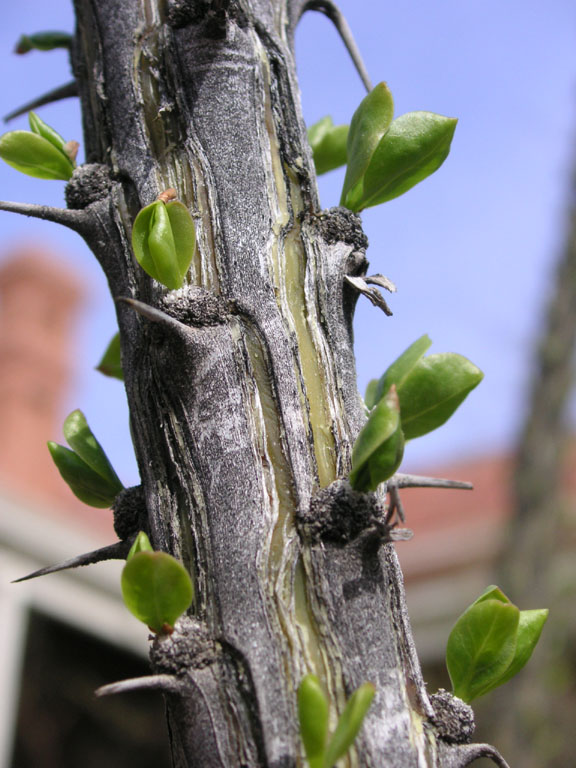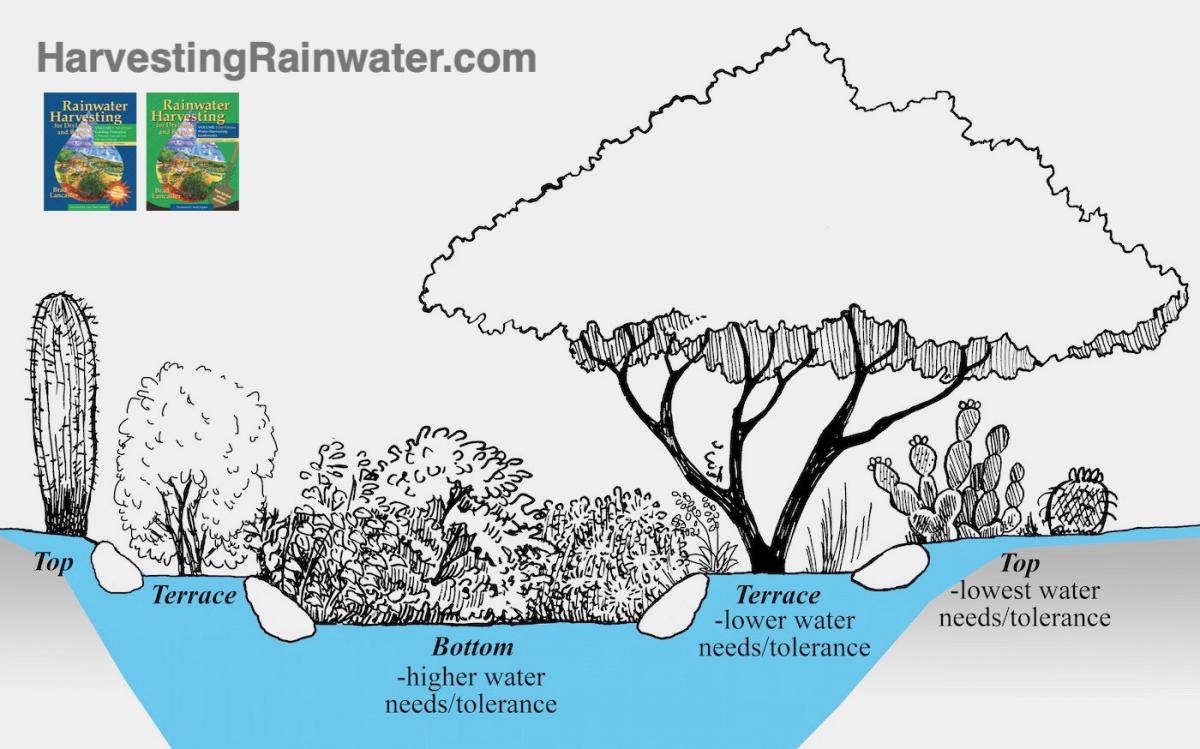

Family: Fouquieriaceae
Common Names:
- English: ocotillo
- Spanish: ocotillo
- O'odham: Melhog
Scientific Name: Fouquieria splendens
Rain Garden Zone: F. splendens thrives in the top Rain Garden Zone.

Reproduced with permission from "Rainwater Harvesting for Drylands and Beyond" by Brad Lancaster, HarvestingRainwater.com
Flowering Season: Spring
Characteristics: F. splendens is a drought deciduous large shrub that can grow up to 20 ft in
height (1). Stems are oriented upright, green and waxy, with thorns (1). The branches remain
leafless until rain falls, and produce small, green, ovate leaves (2). Flowers are bright orange-
red, tubular in shape and grow in tight clusters at the end of each branch (2).
Landscape Cultivation: Found on dry slopes and flats. Full sun. The shrub is considered low
water use and cold hardy (down to 10 oF); it is commonly found growing on dry slopes and flats
with full sun exposure (1, 2).
Ethnobotany:
Wildlife:
Flowers attract a range of pollinators: hummingbirds, bees, butterflies, and seeds
provide food for birds and other small mammals (2).
Edible:
Flowers and seeds have a variety of culinary uses; flowers steeped in water for 8 hours
make a nice "sun tea" (3), flowers and capsules can be eaten cooked or raw (4), and
seeds can be parched and ground into a flour (5).
Other:
Branches can be cut and planted to create a "living fence" (1). Wax coating on stems can
be used to make belt dressing (6).
References:
1. UA Campus Arboretum
2. Lady Bird Johnson Wildflower Center
3. Bigfoot, Peter. Useful Wild Western Plants - The Blessings of Southwestern Herbs. Reevis
Mountain School and Sanctuary
4. Facciola, Stephen. (1998). Cornucopia II - A Source Book of Edible Plants. Kampong
Publications.
5. Bean, Lowell John and Katherine Siva Saubel. (1972). Temalpakh – Cahuilla Indian
Knowledge and Usage of Plants. Malki Museum Press.
6. Kearney, Thomas H., Robert H. Peebles, and collaborators. (1951). Arizona Flora.
University of California Press.
To learn more about this species, see the Campus Arboretum species description page.

